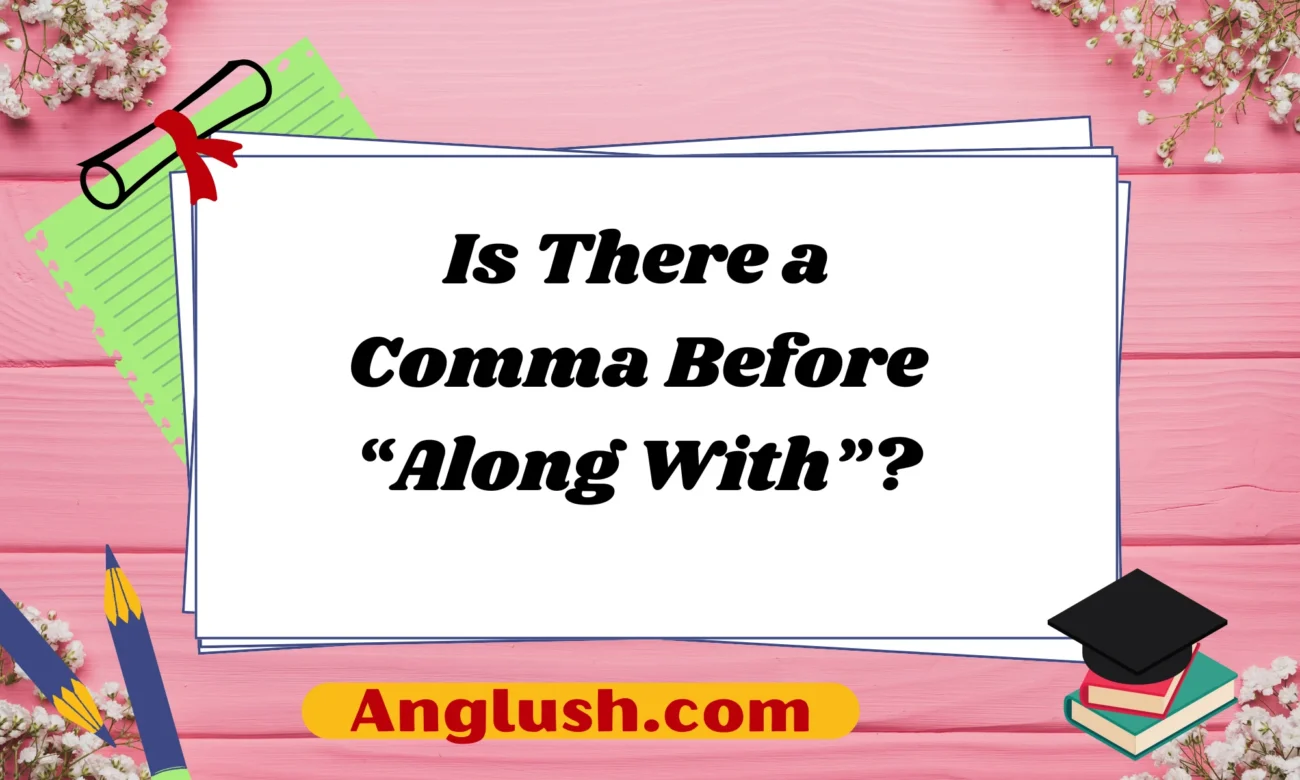Introduction
The English language is full of nuances, and one of the trickiest aspects of writing is punctuation. A common question that arises is whether a comma should be placed before the phrase “along with.” Writers often find themselves confused about the correct usage, wondering if punctuation rules dictate the need for separation.
In this article, we will explore whether a comma is necessary before “along with” and in what contexts it should be used. We will break down the grammatical role of the phrase, provide clear examples, and offer alternative expressions that might be more suitable in different situations. Additionally, we’ll discuss how the presence or absence of a comma can affect the meaning of a sentence.
Understanding “Along With” in a Sentence
1. What Type of Phrase Is “Along With”?
The phrase “along with” functions as a prepositional phrase that introduces additional information. It often follows a noun and provides extra details that are related but not essential to the sentence’s core meaning.
Example:
✅ The manager, along with his team, will attend the conference.
Here, “along with his team” adds additional information about the manager but does not change the main subject of the sentence. The main action (will attend the conference) is still tied to “the manager” alone.
2. Does “Along With” Make a Compound Subject?
One of the biggest misconceptions about “along with” is that it creates a compound subject (like “and” does). However, this is incorrect. The phrase does not change the singular or plural nature of the subject.
Incorrect:
❌ The manager along with his team are attending the conference.
(The verb “are” is incorrect because “along with” does not make “manager” and “team” a compound subject.)
Correct:
✅ The manager, along with his team, is attending the conference.
In this case, the subject is still “the manager” (singular), so the singular verb “is” is required. The phrase “along with his team” simply adds extra information.
When to Use a Comma Before “Along With”
1. Use a Comma When “Along With” Introduces Non-Essential Information
When the phrase “along with” is used as extra information (a non-essential phrase), a comma should be placed before it.
Example:
✅ The CEO, along with the board members, made the final decision.
Here, “along with the board members” provides additional context but is not necessary to understand the core message. If you remove it, the sentence still makes complete sense:
✔ The CEO made the final decision.
2. No Comma When “Along With” Is Essential to the Meaning
If the phrase “along with” is essential to understanding the sentence, a comma is not needed.
Example:
✅ The problems along with the delays caused the project to fail.
Here, “along with the delays” is crucial to the meaning of the sentence. Without it, the sentence would lose some of its intended meaning.
✔ The problems caused the project to fail.
(While still correct, this does not fully capture the idea that delays also played a role.)
Comma Before “Along With” – Examples in Different Contexts
To reinforce these rules, let’s look at more sentence examples and analyze when a comma should or should not be used.
Examples With a Comma (Non-Essential Information):
- My father, along with my uncle, is coming to visit next week.
- The software update, along with new security patches, will be released soon.
- The chef, along with his sous chefs, prepared an extravagant meal.
- Her book, along with several essays, was published last year.
Examples Without a Comma (Essential Information):
- The expenses along with the recent losses have affected the company’s budget.
- His determination along with his experience helped him secure the job.
- The data along with user feedback suggests a need for improvement.
- The rain along with strong winds made travel difficult.
Alternatives to “Along With”
If you find yourself overusing “along with”, consider these alternative phrases:
| Alternative Phrase | Example Sentence |
| Together with | The teacher, together with her assistants, planned the event. |
| Accompanied by | The president, accompanied by security personnel, arrived at the summit. |
| In addition to | In addition to his salary, he receives yearly bonuses. |
| As well as | She enjoys painting as well as sculpting. |
| Coupled with | The high cost, coupled with declining sales, led to financial losses. |
Each of these options can help diversify your writing while maintaining clarity.
10 Texting Examples for Easy Understanding
To make these rules even clearer, here are 10 user-friendly examples in a texting format that highlight proper comma usage:
- Correct: “The manager, along with his assistant, is on a business trip.”
- Incorrect: “The manager along with his assistant are on a business trip.”
- Correct: “The CEO, along with the board, will announce the merger tomorrow.”
- Incorrect: “The CEO along with the board will announce the merger tomorrow.”
- Correct: “The new policies along with stricter regulations will affect small businesses.”
- Incorrect: “The new policies, along with stricter regulations, will affect small businesses.”
- Correct: “The guests, along with their families, are invited to the dinner.”
- Incorrect: “The guests along with their families are invited to the dinner.”
- Correct: “His dedication along with his hard work earned him a promotion.”
- Incorrect: “His dedication, along with his hard work, earned him a promotion.”
Final Thoughts
The decision to use a comma before “along with” depends on whether the phrase introduces non-essential or essential information.
- ✅ Use a comma if “along with” adds extra, non-essential details.
- ❌ Do not use a comma if “along with” is integral to the sentence.
Understanding this distinction will help you write with clarity and professionalism, making your writing more precise and grammatically correct.
Next time you use “along with,” take a moment to analyze whether the phrase is essential or extra information. Doing so will ensure you place commas correctly and enhance your overall writing quality.

